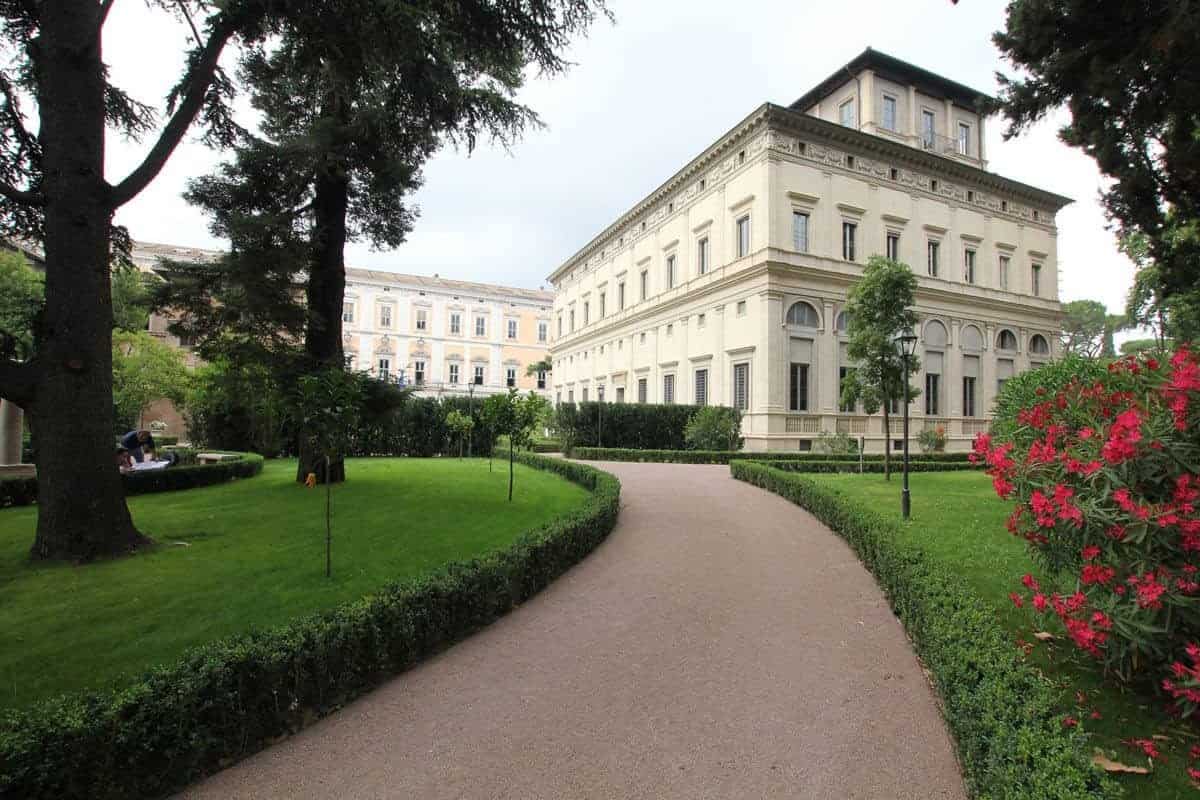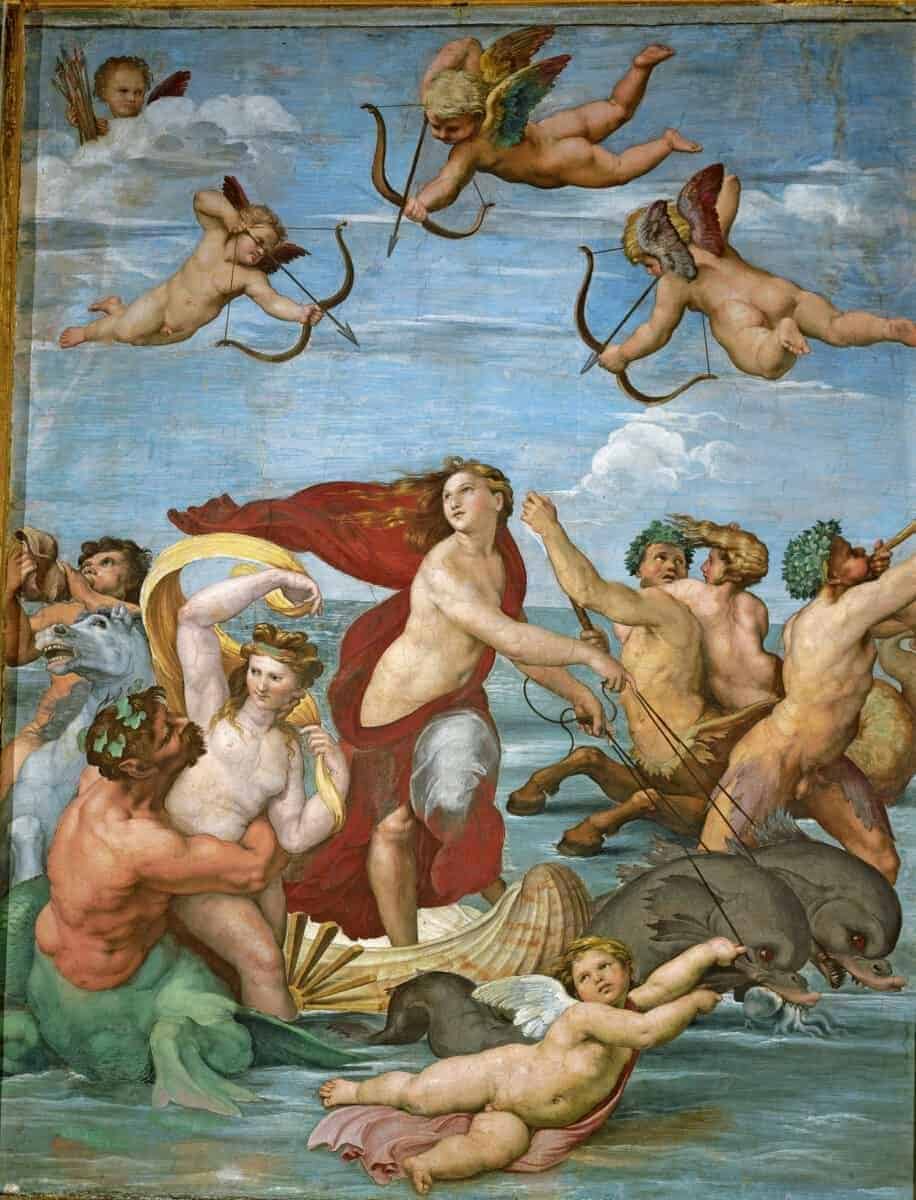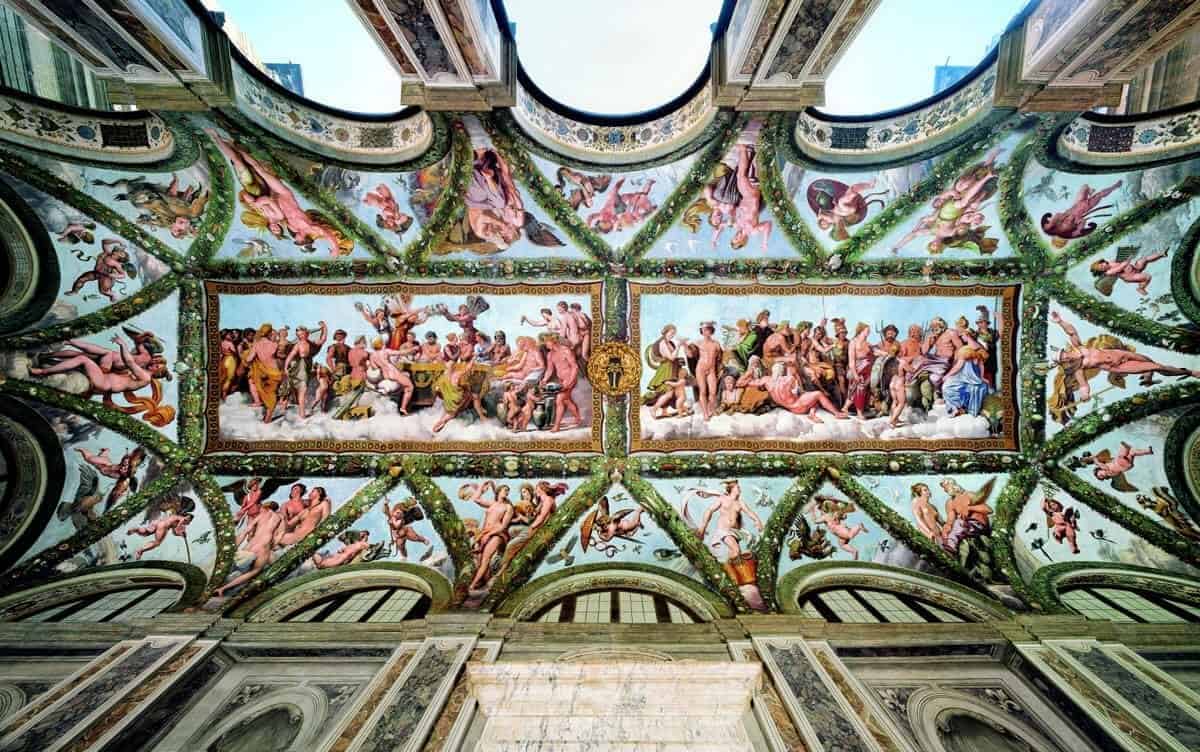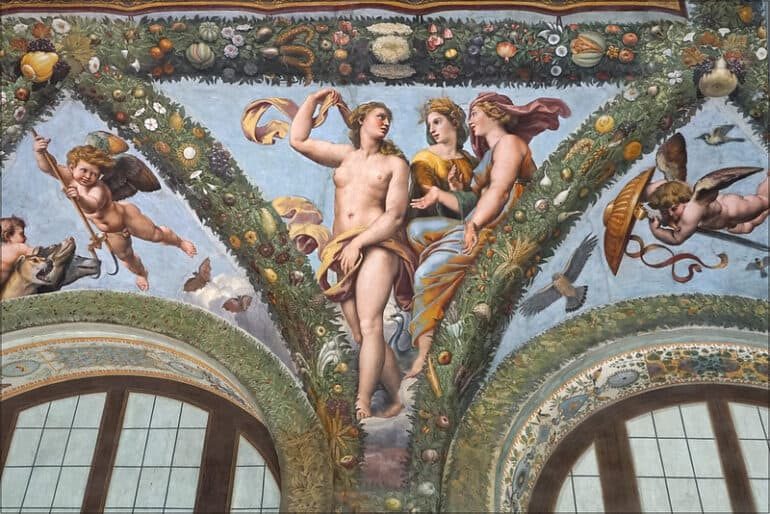A Renaissance Villa that was gorgeously frescoed by Raphael
Between the idyllic neighbourhood of Trastevere and the enchanting Botanical Garden yet another forbidden love story is waiting to be discovered: Villa Farnesina, an Italian Renaissance gem. In between the rooms of the villa, commissioned by the wealthy Sienese banker Agostino Chigi and built by the architect Baldassare Peruzzi during the first years of the 16th century, we find frescoes by Raphael and his school of art, and additions by Sebastiano del Piombo and Sodoma, creating one of the most harmonious creations of Italian Renaissance art.
Right here, amidst the rooms of the villa, now owned by the Accademia Nazionale dei Lincei, Raphael gave his best. Visitors will be left in awe while admiring the jaw-dropping frescoes of the interior rooms by artists such as Raphael, Sebastiano del Piombo, Giovanni Antonio Bazzi, known as “Sodoma”, and even Peruzzi. At the end of the 16th century, the villa was purchased by Cardinal Alessandro Farnese, from which the name Farnesina derives, to distinguish the villa from Palazzo Farnese, found on the other side of the Tiber River.
The gardens of Villa Farnesina

If you prefer, you could start your journey from the sophisticated Italian style garden. As you stroll through the gardens, immersing yourself in both artistic and natural beauties, you’ll have the sensation of enjoying the same peace of mind as the banker Agostino Chigi enjoyed while strolling through the gardens.
The Loggia of Galatea

The Loggia, located on the ground floor of the villa, boasts frescoes by various artists. It takes its name from the fresco of the nymph Galatea by Raffaello Sanzio. It’s here, in the Loggia of Galatea, that in 1511 Baldassare Peruzzi frescoed the vault with the horoscope of Agostino Chigi. Instead, Sebastiano del Piombo painted a large figure of Polyphemus along with mythological scenes from Ovid’s Metamorphoses inside the nine lunettes. The tenth lunette was instead decorated with a gigantic head of a young man, which legend has it was the work of the great Michelangelo Buonarroti.
An anecdote, centered on the rivalry between Raphael and Buonarroti, tells an interesting story. Since Raphael never allowed anyone to see his work, Michelangelo, who was curious to peek at Raphael’s frescoes, disguised himself as a vendor and managed to trick the surveillance and see Raphael’s fresco. Michelangelo couldn’t resist himself and, before running away, took a piece of coal to draw a giant head on the fresco. When Raphael saw the giant head, he didn’t have it in him to erase it, and ordered no one to touch it.
The Triumph of Galatea

The Triumph of Galatea, painted by Raphael, represents the apotheosis of the nymph Galatea, depicted while riding a chariot led by Palemone in the shape of a shell drawn by two dolphins. Surrounding the nymph there’s a festive procession of mermans and nereids, while some erotes guard her from above.
The fresco, with the milky white nymph as protagonist wearing a red dress inflated by the wind and arms stretched to guide the dolphins, truly takes your breath away. As do the bodies of the sea creatures, inspired by Michelangelo and softened by Raphael’s natural grace.
The Loggia of Cupid and Psyche

But the true charm of Villa Farnesina lies in the Loggia of Cupid and Psyche, which takes its name from the fresco by the school of Raphael dating back to 1518. The fresco, painted on the vault based on designs by Raphael, showcases episodes inspired by Apuleio’s Golden Donkey. Unfortunately, once the frescos of Polyphemus and Galatea were completed, Agostino Chigi was forced to interrupt the decoration of the villa for over five years. The reason was most probably Raphael’s lack of time.
Things changed in 1517 when the banker engaged Raphael in the pictorial cycle of the gallery on the ground floor. Here the artist gave full rein to his creative abilities, not merely portraying isolated scenes, but giving life to a spectacular continuous narrative, linked to the imminent wedding of his commissioner. The painter chose the story of Cupid and Psyche. Surrounded by festive garlands of fruit and flowers that enhance the effect of unity between the palazzo and the garden, you can admire the scenes of the handsome god of love and his beautiful but mortal wife. Suggestions have been made that Psyche here portrays Imperia, the gorgeous courtesan with whom the commissioner of the work, the rich banker Agostino Chigi, had an affair.
The Hall of the Frieze
This hall, which was originally used as a waiting room for guests, takes its name from the frieze at the top of the walls. Peruzzi frescoed the hall in 1508, depicting the twelve Labours of Hercules on the north side and partly on the east side, as well as other mythological episodes on the following four walls.
Other Halls

The decoration of the most intimate room of the Villa, Alexander and Roxanne’s Wedding Hall, located on the first floor, was entrusted to the painter from Vercelli, Giovanni Antonio Bazzi, known as Sodoma. Named after the main fresco, which occupies the entire north wall, the room was originally Agostino Chigi’s bedroom. The 16th century coffered ceiling boasts grotesque decorations and mythological subjects.
The Hall of Perspectives can also be found on the first floor of the villa and features one of the first examples of perspective in painting. The hall takes its name from the decoration by Baldassare Peruzzi who, in 1519, frescoed urban and rural perspective views on the walls and in between the fake columns.
What’s mostly fascinating about Villa Farnesina is the constant dialogue with the ancient world, with its universe of images, symbols and mythigns with which Peruzzi, Sebastiano del Piombo, Raphael and Sodomano engage in a dialogue full of harmony.
You can immerse yourself in the wondrous world of the sea nymph Galatea (The Triumph of Galatea), become part of the heroic works of the semi-god Hercules and witness the matrimony of Alexander the Great and his beloved Roxanne. The light-hearted interior of the quintessential Renaissance palazzo can provide a perfect counterbalance to a day normally full of spotting crucified martyrs and weeping Virgin Mary’s. Moreover, the sensuous nudity of the pagan gods gives evidence of what was at that time an unprecedented lasciviousness. No time to waste allora.
Book Villa Farnesina Raphael Frescoes Tour
Address
Via della Lungara, 230 (Trastevere)
Opening hour
Monday – Saturday 9am – 2pm
Closed Sunday
Tickets
Entry fee €10
Info
villafarnesina.it




